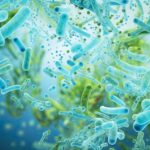What is already known
Over the past 30 years, childhood obesity has skyrocketed, resulting in a significant public health concern. Childhood obesity has been linked to the colonization and development of gut microbiota in early life, but how the infant microbiota protects against factors that trigger obesity remains unclear.
What this research adds
By exposing young mice to antibiotics and a high-fat diet, researchers found that antibiotic treatment leads to increased body fat and metabolic dysfunction. Lactobacillus species, which dominate the small intestine microbiota, appeared to regulate the cells lining the gut to limit diet-induced obesity and metabolic dysfunction through a bacterial metabolite called phenyllactic acid.
Conclusions
The findings suggest that the microbiota-derived metabolite phenyllactic acid can prevent antibiotic-associated obesity in early life.
Over the past 30 years, childhood obesity has skyrocketed, resulting in a significant public health concern. Now, researchers have identified a bacterial metabolite, called phenyllactic acid, that limits diet-induced obesity in mice treated with antibiotics.
The findings, published in Cell Host & Microbe, suggest that phenyllactic acid can prevent antibiotic-associated obesity in early life.
In people, the early-life gut microbiota exhibits low bacterial diversity and it becomes more complex as infants grow, until resembling the microbiota of an adult by ages 3 to 5. As the infant microbiota develops, it is sensitive to several environmental factors, including a high-fat diet and antibiotic treatment, which have been linked to increased weight gain and body fat in children.
Childhood obesity has been also associated with the early-life gut microbiota, but how the infant microbiota protects against factors that trigger obesity remains unclear. To address this question, Catherine Shelton at Vanderbilt University Medical Center in Nashville, Tennessee, and her colleagues exposed young mice to antibiotics and a high-fat diet.
Protective effect
A diet rich in fat led to increased body fat, weight gain and long-lasting metabolic dysfunction after a 5-week antibiotic treatment. Because the small intestine is responsible for absorbing and metabolizing dietary fat, the researchers set out to investigate changes in the small intestine microbiota.
Of the microbes that dominate the small intestine microbiota, Lactobacillus species were substantially decreased after antibiotic treatment. In particular, Ligilactobacillus murinus (L. murinus) was depleted from the small intestine microbiota of mice given antibiotics and a high-fat diet, the researchers found.
Mice given a strain of L. murinus that is resistant to penicillin gained less weight and abdominal fat than mice exposed to antibiotics and a high-fat diet alone — suggesting that
L. murinus protects young mice from diet-driven fat buildup.
Bacterial metabolite
The researchers also found that antibiotics, in combination with a high-fat diet, disrupt the activity of the cells that line the gut, which are called intestinal epithelial cells. A high-fat diet and antibiotics altered the expression of about 200 genes, including some involved in lipid digestion and absorption, in these cells.
Lactobacillus species, and L. murinus in particular, appeared to regulate the activity of intestinal epithelial cells to limit diet-induced obesity and metabolic dysfunction through a bacterial metabolite called phenyllactic acid. Giving phenyllactic acid to young mice protected them from antibiotic-associated and diet-induced metabolic dysfunction, the researchers found.
“We identified a previously unknown mechanism by which the early-life microbiota communicates with the intestinal epithelium to decrease high-fat-induced obesity, providing new evidence linking early-life antibiotic exposure to childhood obesity,” the authors say.











